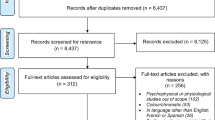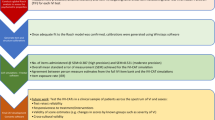Abstract
Background
The value of vision is assumed to be very high. To verify this assumption and to assign resources in medical care accordingly, it is necessary to quantify the value of vision. Although the value of vision is difficult to measure, visual quality of life can be quantified as a surrogate criterion. The measured value gains even more relevance if a comparison can be made between visual quality of life and systemic diseases. Multidisciplinary comparisons are only possible by using utility analysis. Two established methods to measure utility values are the standard gamble method and the time trade-off method. The purpose of this review is to find ophthalmologic utility values, and utility values affected by systemic diseases that correlate to the ophthalmologic ones.
Methods
A literature search was conducted though PubMed of the National Library of Medicine (http://www.ncbi.nlm.nih.gov; date: 06.02.2006). The search terms were: “time trade-off / standard gamble” [text word] and “eye / vision / visual” [text word]; results 24. A report was classified as relevant if visually impaired persons were tested by the time trade-off method or the standard gamble method, or if information was provided on the reliability and validity of these measurements in a group of visually impaired persons. Additional searches were done to find associated publications. A total of 42 publications were found to be of interest.
Results
Results showed that patients, with 20/30–20/50 visual acuity would be willing to pay 19% of their lifetime to get back normal visual acuity. Patients with 20/200–20/400 visual acuity would give up 48% of their lifetime, and blind people would give 60% of their lifetime to regain normal visual acuity. Comparable utility values are seen in patients with AIDS (21%), patients after a stroke who are unable to walk and wash themselves without assistance (46%), and bedridden and incontinent patients following a stroke (66%).
Conclusion
Patients attach great value to vision. The time trade-off method appears to be an appropriate tool to quantify visual quality of life, and one that can be used to compare utility values of different diseases.
Similar content being viewed by others
References
(2007) Pressemitteilung Berufsverband der Augenärzte Deutschlands e.V. http://www.augeninfo.de /presse/0511seh.pdf
(2007) Sehtestaktion 2003 vom Zentralverband deutsches Kraftfahrzeuggewerbe. http://www.kfzgewerbe.de/prromotor/index_20031211170925.htmlesse/p
Brown GC (1999) Vision and quality-of-life. Trans Am Ophthalmol Soc 97:473–511
Brown GC, Brown MM, Sharma S (2000) Difference between ophthalmologists’ and patients’ perceptions of quality of life associated with age-related macular degeneration. Can J Ophthalmol 35:127–133
Brown GC, Brown MM, Sharma S, Beauchamp G, Hollands H (2001) The reproducibility of ophthalmic utility values. Trans Am Ophthalmol Soc 99:199–203 (discussion; 203–204)
Brown GC, Brown MM, Sharma S, Brown H, Gozum M, Denton P (2000) Quality of life associated with diabetes mellitus in an adult population. J Diabetes Complications 14:18–24
Brown GC, Sharma S, Brown MM, Garrett S (1999) Evidence-based medicine and cost-effectiveness. J Health Care Finance 26:14–23
Brown GC, Sharma S, Brown MM, Kistler J (2000) Utility values and age-related macular degeneration. Arch Ophthalmol 118:47–51
Brown MM, Brown GC, Sharma S, Busbee B (2003) Quality of life associated with visual loss: a time tradeoff utility analysis comparison with medical health states. Ophthalmology 110:1076–1081
Brown MM, Brown GC, Sharma S, Busbee B, Brown H (2001) Quality of life associated with unilateral and bilateral good vision. Ophthalmology 108:643–647
Brown MM, Brown GC, Sharma S, Garrett S (1999) Evidence-based medicine, utilities, and quality of life. Curr Opin Ophthalmol 10:221–226
Brown MM, Brown GC, Sharma S, Hollands H, Landy J (2002) Quality of life and systemic comorbidities in patients with ophthalmic disease. Br J Ophthalmol 86:8–11
Brown MM, Brown GC, Sharma S, Kistler J, Brown H (2001) Utility values associated with blindness in an adult population. Br J Ophthalmol 85:327–331
Brown MM, Brown GC, Sharma S, Shah G (1999) Utility values and diabetic retinopathy. Am J Ophthalmol 128:324–330
Brown MM, Brown GC, Sharma S, Smith AF, Landy J (2001) A utility analysis correlation with visual acuity: methodologies and vision in the better and poorer eyes. Int Ophthalmol 24:123–127
Duncan PW, Lai SM, Keighley J (2000) Defining post-stroke recovery: implications for design and interpretation of drug trials. Neuropharmacology 39:835–841
Gore JM, Granger CB, Simoons ML, Sloan MA, Weaver WD, White HD, Barbash GI, Van de WF, Aylward PE, Topol EJ (1995) Stroke after thrombolysis. Mortality and functional outcomes in the GUSTO-I trial. Global use of strategies to open occluded coronary arteries. Circulation 92:2811–2818
Hirneiss C, Neubauer AS, Tribus C, Kampik A (2006) Value-based medicine in ophthalmology. Ophthalmologe 103:493–500
Hirneiss C, Neubauer AS, Welge-Lussen U, Eibl K, Kampik A (2003) Measuring patient’s quality of life in ophthalmology. Ophthalmologe 100:1091–1097
Hollands H, Lam M, Pater J, Albiani D, Brown GC, Brown M, Cruess AF, Sharma S (2001) Reliability of the time trade-off technique of utility assessment in patients with retinal disease. Can J Ophthalmol 36:202–209
Knauer C, Pfeiffer N (2006) Blindness in Germany - today and in 2030. Ophthalmologe 103:735–741
Konig HH, Barry JC (2004) Cost effectiveness of treatment for amblyopia: an analysis based on a probabilistic Markov model. Br J Ophthalmol 88:606–612
Krumins PE, Fihn SD, Kent DL (1988) Symptom severity and patients’ values in the decision to perform a transurethral resection of the prostate. Med Decis Mak 8:1–8
Laupacis A, Keown P, Pus N, Krueger H, Ferguson B, Wong C, Muirhead N (1996) A study of the quality of life and cost-utility of renal transplantation. Kidney Int 50:235–242
Lunde IM (1993) Patients’ perceptions-a shift in medical perspective. Scand J Prim Health Care 11:98–104
Mangione CM, Berry S, Spritzer K, Janz NK, Klein R, Owsley C, Lee PP (1998) Identifying the content area for the 51-item National Eye Institute Visual Function Questionnaire: results from focus groups with visually impaired persons. Arch Ophthalmol 116:227–233
McCarty CA, Keeffe JE, Livingston PM, Taylor HR (1996) The importance and state of medical and public health research related to vision in Australia. Aust N Z J Ophthalmol 24:3–5
Miyamoto JM, Eraker SA (1985) Parameter estimates for a QALY utility model. Med Decis Mak 5:191–213
Nease RF, Whitcup SM, Ellwein LB, Fox G, Littenberg B (2000) Utility-based estimates of the relative morbidity of visual impairment and angina. Ophthalmic Epidemiol 7:169–185
Post PN, Stiggelbout AM, Wakker PP (2001) The utility of health states after stroke: a systematic review of the literature. Stroke 32:1425–1429
Redelmeier DA, Detsky AS (1995) A clinician’s guide to utility measurement. Prim Care 22:271–280
Rothwell PM, McDowell Z, Wong CK, Dorman PJ (1997) Doctors and patients don’t agree: cross sectional study of patients’ and doctors’ perceptions and assessments of disability in multiple sclerosis. BMJ 314:1580–1583
Sackett DL, Torrance GW (1978) The utility of different health states as perceived by the general public. J Chronic Dis 31:697–704
Schrader GD (1997) Subjective and objective assessments of medical comorbidity in chronic depression. Psychother Psychosom 66:258–260
Sharma S, Brown GC, Brown MM, Hollands H, Robins R, Shah GK (2002) Validity of the time trade-off and standard gamble methods of utility assessment in retinal patients. Br J Ophthalmol 86:493–496
Smith RD, Hall J, Gurney H, Harnett PR (1993) A cost-utility approach to the use of 5-fluorouracil and levamisole as adjuvant chemotherapy for Dukes’ C colonic carcinoma. Med J Aust 158:319–322
Stein JD (2004) Disparities between ophthalmologists and their patients in estimating quality of life. Curr Opin Ophthalmol 15:238–243
Steinberg EP, Tielsch JM, Schein OD, Javitt JC, Sharkey P, Cassard SD, Legro MW, ener-West M, Bass EB, Damiano AM (1994) The VF-14. An index of functional impairment in patients with cataract. Arch Ophthalmol 112:630–638
Torrance GW (1986) Measurement of health state utilities for economic appraisal. J Health Econ 5:1–30
Tsevat J, Solzan JG, Kuntz KM, Ragland J, Currier JS, Sell RL, Weinstein MC (1996) Health values of patients infected with human immunodeficiency virus. Relationship to mental health and physical functioning. Med Care 34:44–57
Wakker P, Stiggelbout A (1995) Explaining distortions in utility elicitation through the rank-dependent model for risky choices. Med Decis Mak 15:180–186
World Health Organisation (2006) The World Health Report 2003 - Shaping the Future. http://www.who.int/whr/2003/en/whr03_en.pdf
Author information
Authors and Affiliations
Corresponding author
Additional information
This article is supported by an unrestricted grant of the German Ophthalmological Society (DOG).
Rights and permissions
About this article
Cite this article
Knauer, C., Pfeiffer, N. The value of vision. Graefes Arch Clin Exp Ophthalmol 246, 477–482 (2008). https://doi.org/10.1007/s00417-007-0668-4
Received:
Revised:
Accepted:
Published:
Issue Date:
DOI: https://doi.org/10.1007/s00417-007-0668-4




